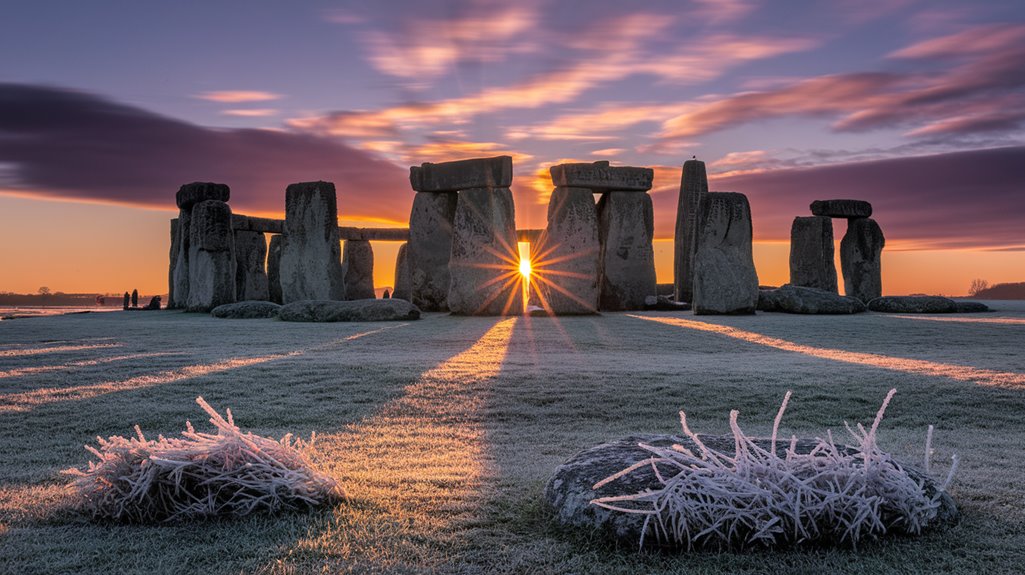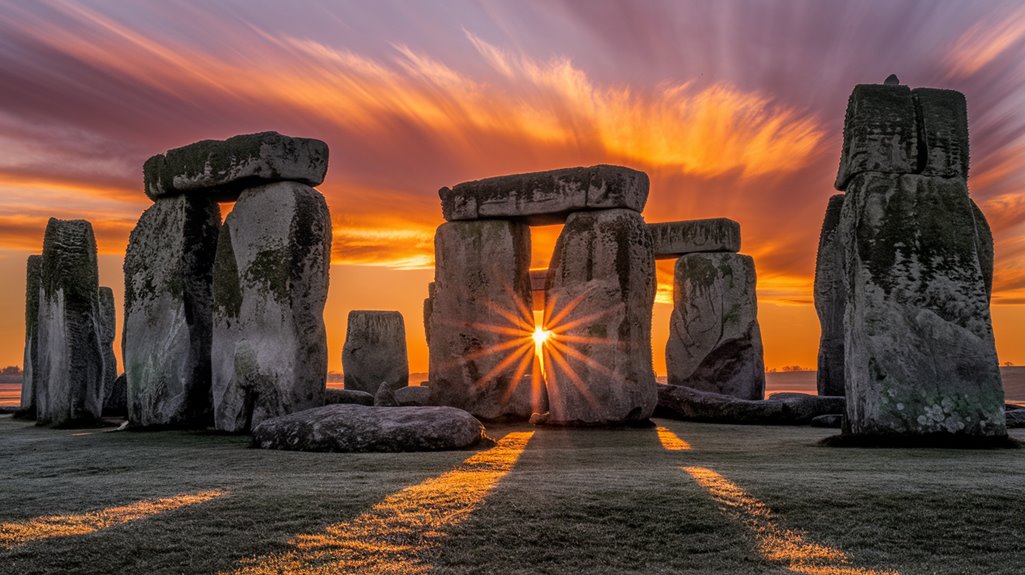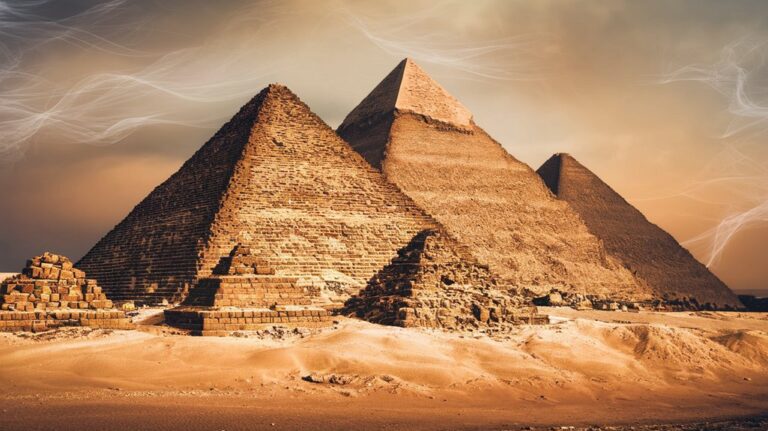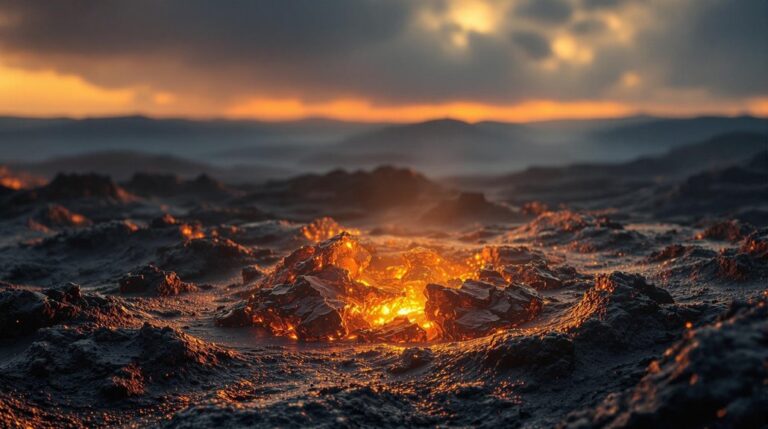Stonehenge Aligns With the Winter Solstice Sunset
You'll find few ancient monuments as precisely engineered as Stonehenge, where the winter solstice sunset creates a perfect astronomical spectacle. As the sun descends between two massive trilithons, you're witnessing the same alignment that guided Neolithic farmers and priests over 4,500 years ago. While modern visitors often focus on the summer solstice, it's the winter alignment that reveals the true genius of these prehistoric architects and their deep connection to the solar calendar.
The Ancient Solar Calendar: Understanding Stonehenge's Purpose
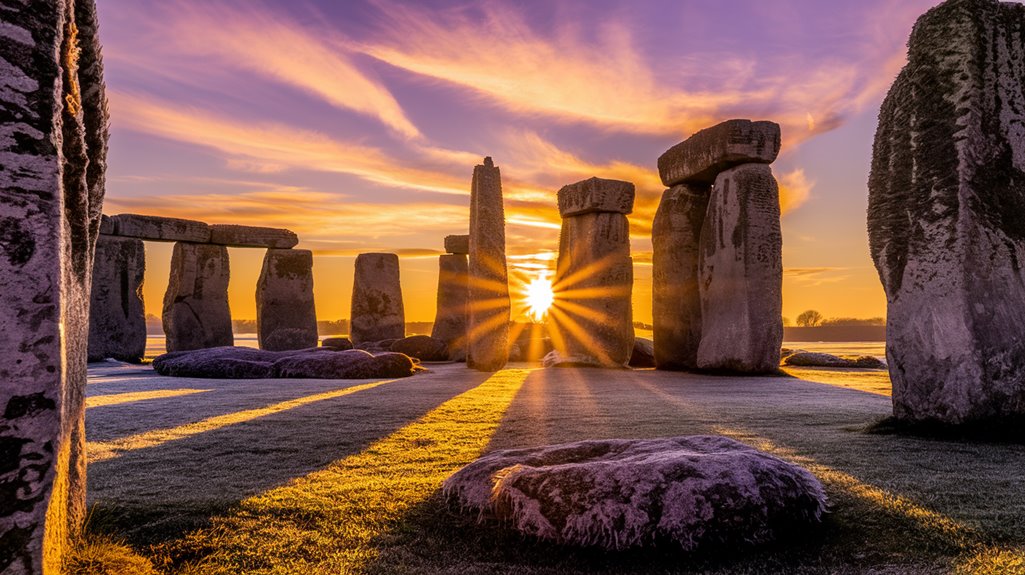
While many ancient structures inspire wonder, Stonehenge stands out as one of humanity's most sophisticated early solar calendars.
You'll find an ingenious design incorporating 30 sarsen stones and lintels that likely represented the days of each month, creating a 360-day calendar. The builders added five pairs of stones to account for additional days, while four station stones marked quarter-day increments, achieving remarkable precision with 365.25 days. The Station Stones' alignment with the moon's extreme positions demonstrates the builders' detailed understanding of lunar cycles.
The monument's astronomical significance extends beyond basic timekeeping. As farmers and herders, the builders needed to track seasonal changes for agricultural purposes, interweaving ancient rituals with practical needs. Research conducted by Professor Timothy Darvill reveals that all sarsen stones were added during a single construction phase around 2500 BCE.
The alignment with solstices, particularly the winter sunset, suggests the site hosted seasonal celebrations that united the community's spiritual and agricultural lives. This sophisticated understanding of celestial movements reveals the builders' remarkable astronomical knowledge.
Precise Mathematical Engineering of the Monument
Beyond its astronomical significance, Stonehenge's construction reveals an extraordinary level of mathematical precision that would impress even modern engineers.
The Neolithic builders used ropes and pegs for surveying the precise measurements, similar to modern geometric tools. You'll find geometric precision in every aspect of its design, from the perfect 97.33-foot circular sarsen ring to the sophisticated use of 5:12:13 Pythagorean triangles.
The monument's astronomical alignment showcases advanced mathematical understanding through:
- A symmetrical ground plan along the 39.5° diagonal line
- A precisely calculated Station Stones rectangle that tracks lunar movements
- An inner circle divided into six equal portions using equilateral triangles
- A meticulously planned Aubrey holes circle with a 140.8-foot radius
You're looking at a structure that demonstrates not just architectural skill, but a deep grasp of geometry, astronomy, and mathematical principles that were far ahead of their time. The monument's original moat, with its 360-foot diameter, demonstrates an early understanding of the relationship between circular geometry and the solar year.
Significance of the Winter Solstice Alignment
The mathematical precision of Stonehenge serves an even greater purpose: its perfect alignment with the winter solstice.
You'll find this alignment deeply woven into both cultural rituals and seasonal celebrations, reflecting ancient peoples' understanding of life's cyclical nature.
At Stonehenge, you're witnessing more than just architectural brilliance – you're seeing a sophisticated calendar that guided agricultural timing and communal gatherings. The sun sets in a narrow trilithon slot during midwinter, creating a dramatic astronomical spectacle.
Thousands of pilgrims celebrate at the ancient site each year to witness the spectacular solstice sunrise.
The monument's alignment helped Neolithic farmers track the changing seasons, essential for their survival through crop planning and animal herding.
When you visit during the winter solstice, you're participating in a tradition shared with other ancient sites like Newgrange and Maeshowe.
These monuments demonstrate how widespread solstice observation was, marking the keenly awaited return of longer days with ceremonies celebrating renewal and rebirth.
Archaeological Evidence of Solar Observation
Archaeological discoveries have confirmed Stonehenge's sophisticated solar alignment through decades of meticulous research.
The solar significance of this ancient monument was first documented in 1720 by William Stukeley, and subsequent archaeological findings have reinforced these observations.
You'll find compelling evidence of Stonehenge's astronomical purpose through:
- Excavations revealing a ceremonially clean stone circle area, specifically maintained for solstice observations
- Precise positioning of stones to frame both summer sunrise and winter sunset views
- Comparative studies showing similar solar alignments at nearby sites like Woodhenge
- Advanced computer and terrain modeling that reconstructs prehistoric astronomical views with remarkable accuracy
Modern research continues to validate the deliberate positioning of these massive stones, though it's crucial to understand that Stonehenge wasn't a precise solar calendar as some have claimed. The monument's layout and structure demonstrate its role in marking seasonal changes throughout the year.
Archaeological evidence suggests that ancient communities prioritized winter solstice celebrations, gathering at nearby Durrington Walls for extensive feasting ceremonies.
Modern Observations and Changes in Alignment
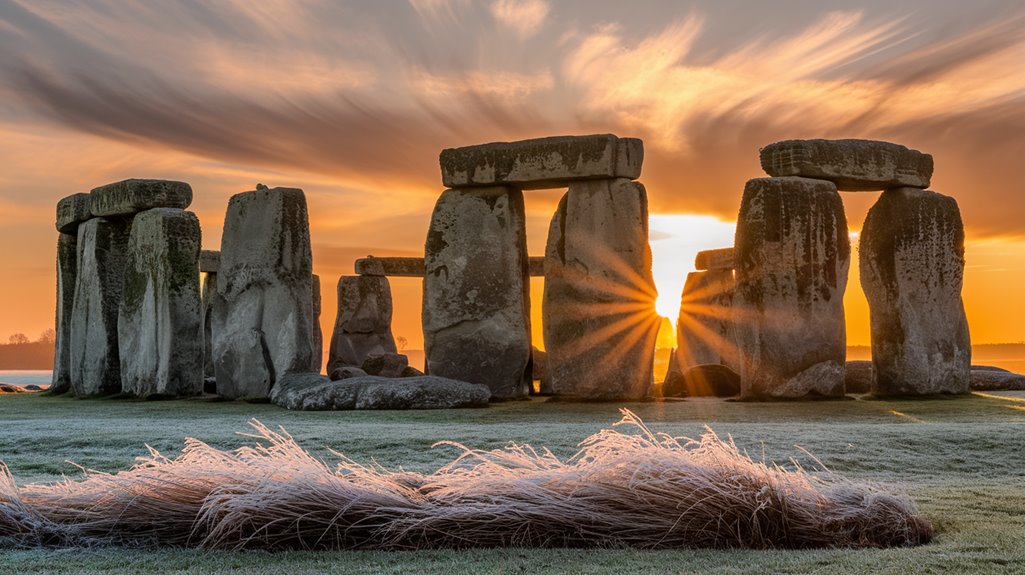
Modern observations of Stonehenge's winter solstice alignment reveal significant changes from its original prehistoric configuration.
The site draws hundreds of knowledgeable visitors during the winter solstice, including robed Druids who gather to observe this astronomical phenomenon.
You'll notice that the Earth's tilt has shifted from 24° to 23.5° over the millennia, causing the sunrise position to drift leftward of the Heel Stone. This change means you're now seeing a different alignment than the prehistoric builders intended.
Today's observational challenges include trees on the horizon and a metal bridge that partially obstruct the view.
Despite these obstacles, you can still witness spectacular seasonal variations during solstice events. When you stand at specific points, you'll see the Heel Stone's shadow penetrate the Sarsen Circle through the main entrance. The winter solstice sunset appears between the tallest Trilithon when viewed from the proper location.
While the midsummer sunrise doesn't perfectly align with the Heel Stone anymore, laser surveys confirm the monument's precise arrangement for framing these celestial events.

